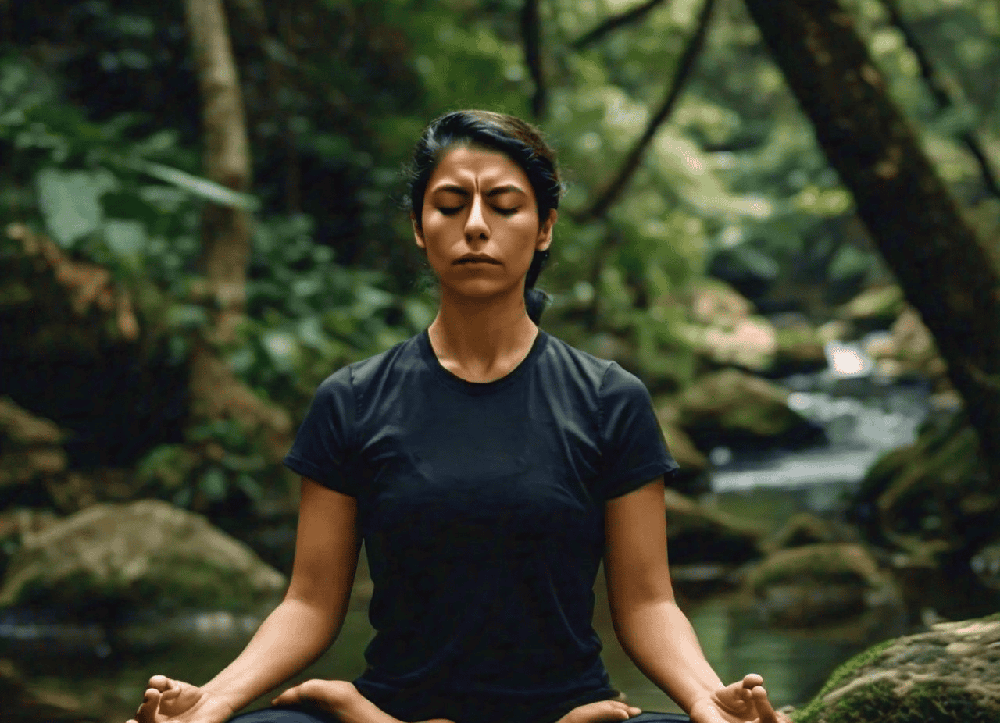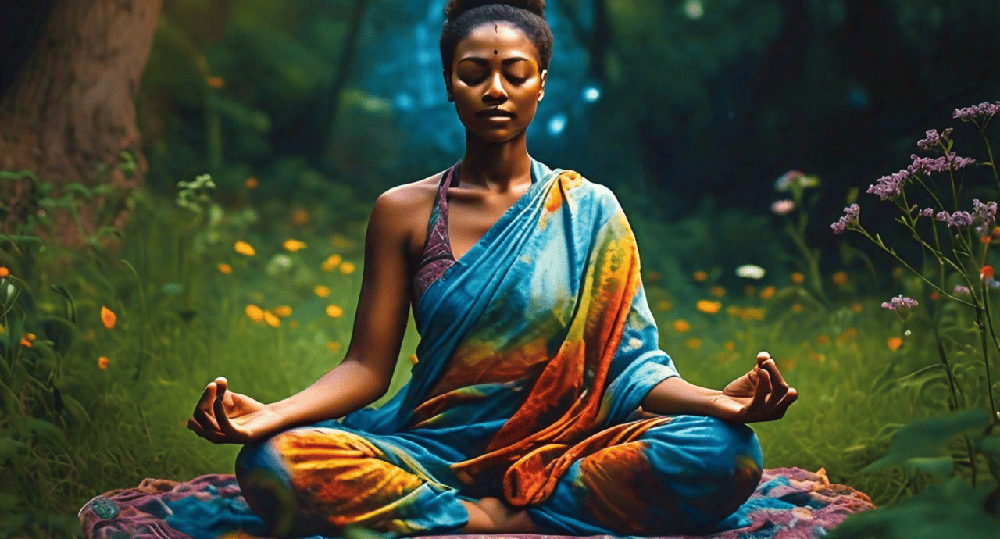Dhyana, or meditation, is a timeless practice that our ancient rishis and sages swore by. And for good reason. When we grasp the fundamental purpose of dhyana, it becomes much clearer to choose the right sadhana (practice) for our spiritual journey. You see, dhyana is not just about sitting quietly or emptying our minds; it's about cultivating inner awareness, clarity, and connection with our Atman (Higher Self).
For instance, some of us practice dhyana to quiet the mind and experience inner peace, while others seek Self-Realization and liberation from the cycle of birth and death. Whatever the reason, the ultimate goal is to attain Moksha, or spiritual freedom. By understanding our intentions, we can select a dhyana technique that aligns with our goals. For example, chanting the OM mantra can connect us with the universe, while focusing on the breath can quiet the mind and reveal our true nature.

By choosing a technique that resonates with our purpose, we can deepen our practice and experience the profound benefits of dhyana. Regular practice can lead to improved mental clarity, emotional balance, and a sense of connection to ourselves, our loved ones, and the world around us. As we progress on this journey, we may find that our relationships improve, our karma is resolved, and our overall well-being flourishes. So, let's embrace dhyana as a powerful tool for spiritual growth and self-discovery, and may our practice guide us towards Moksha.
People embark on the journey of dhyana (meditation) for various reasons, all of which are intertwined like the threads of a garland. Some seek to quiet the constant chatter of their minds, finding it challenging to focus and experience the bliss of inner peace (shanti). Others aim to uncover the answers to life's profound questions, hoping to cultivate self-belief (atma-vishwas) and confidence (shraddha). Through dhyana, we can achieve all of these goals and more, just like a farmer reaps a bounty of fruits from a well-nourished tree.
By sitting in stillness and silence, we can calm the turbulent waters of our minds, allowing us to concentrate and focus with clarity (sattva). Regular dhyana practice can help us develop mental discipline (samyama), enabling us to stay present and aware in the face of challenges, just like a yogi balances on one leg. For instance, a student can improve their academic performance (vidya), an athlete can enhance their game (krida), and a professional can make better decisions (nirnaya).
Dhyana also allows us to tap into our inner wisdom (antah-prajna), guiding us towards self-discovery (atma-darshana) and personal growth (vyakti-vikasa). As we dive deeper into our consciousness, we can uncover the answers we've been seeking, revealing our true potential (svarupa) and purpose (dharma). By cultivating self-belief and confidence, we can overcome obstacles (vighna) and achieve our goals (siddhi). For example, a person struggling with anxiety (chinta) can find solace in dhyana, while a seeker (sadhaka) can discover their spiritual path (marga).

Through dhyana, we can experience profound peace (shanti), clarity (sattva), and inner strength (bala). Regular practice can transform our lives, helping us become more mindful (sachetan), compassionate (karuna), and aware (pragya). So, let's embrace dhyana as a powerful tool for spiritual growth (adhyatma-vikasa), self-discovery, and overall well-being (sarva-mangalam).
"To truly benefit from dhyana (meditation), it's essential to find a technique that resonates with our specific needs and goals, just like a skilled ayurvedic practitioner prescribes a personalized remedy for our unique dosha (constitution). The right approach should enable us to identify and address our inner struggles, providing a clear path to moksha (liberation) from the cycles of suffering.
I can attest to the transformative power of dhyana from personal experience. When I began my practice, I was able to introspect and recognize the patterns of my mind, pinpointing the root causes of my dukha (suffering). Through regular dhyana, I gained the clarity and strength to liberate myself from the shackles of negative thoughts and emotions, much like a bird breaking free from its cage.
For instance, if we're struggling with anxiety (chitta-bhrama), a loving-kindness meditation (maitri-dhyana) can help us cultivate compassion (karuna) and calmness (shanti). If we're seeking spiritual growth (adhyatma-vikasa), a mantra meditation (japa-dhyana) can connect us with the universe and reveal our true nature (svarupa). By selecting a technique that aligns with our needs, we can unlock the full potential of dhyana and experience profound peace (shanti), clarity (sattva), and inner strength (bala). Regular practice can transform our lives, enabling us to navigate life's challenges with grace and equanimity (samata)



